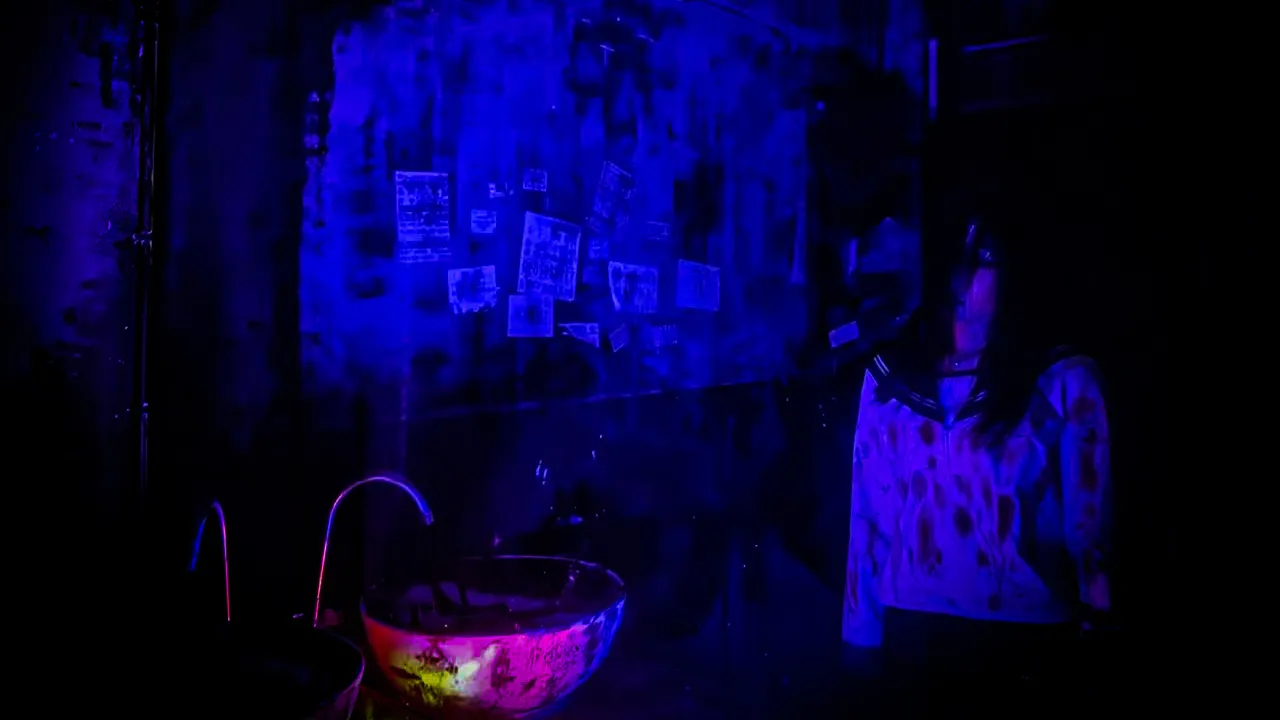Escape rooms have rapidly evolved from a niche activity to a mainstream form of entertainment, captivating millions worldwide. This fascinating journey reveals how escape rooms developed, their rise in popularity, and the pivotal role businesses like Mystiworld Escape Room play. Known for being the best escape room in Thailand, Mystiworld exemplifies the creativity and innovation driving this industry.
Origins of the Escape Room Concept
The concept of escape rooms can be traced back to the world of video games and interactive fiction. In the early 2000s, point-and-click adventure games like “Myst” and “The 7th Guest” allowed players to explore virtual environments, solve puzzles, and uncover hidden stories. These games laid the groundwork for the first physical escape rooms, which sought to bring the immersive experiences of video games into the real world.
In 2007, Takao Kato, the founder of SCRAP Co. Ltd., created the first live-action escape room in Kyoto, Japan. Kato’s game, called “Real Escape Game,” challenged participants to solve puzzles and find clues within a limited time to escape a themed room. The idea quickly gained popularity in Japan and spread to other parts of Asia.
Expansion to the West
By 2011, the escape room craze had reached Europe and North America. In Budapest, Hungary, Attila Gyurkovics founded “ParaPark,” which is often credited as the first escape room in Europe. Around the same time, escape rooms began appearing in the United States and Canada, captivating players with their unique combination of entertainment and mental challenge. The appeal of escape rooms lies in their ability to provide a fun, engaging, and intellectually stimulating experience. They offer a break from the mundane, allowing participants to immerse themselves in different worlds and scenarios.
The Escape Room Boom
The early 2010s saw a rapid expansion of escape rooms worldwide. Entrepreneurs recognized the potential of this new form of entertainment, and escape rooms began appearing in major cities around the globe. Companies like Escape Hunt, which started in Bangkok in 2013, played a significant role in popularizing escape rooms in Asia and beyond. As the industry grew, so did the complexity and creativity of the escape room designs. Modern escape rooms, such as those at the Mystiworld Escape Room, have evolved to include intricate storylines, high-tech gadgets, and immersive environments that rival movie sets.
Mystiworld Escape Room – Setting the Standard
One standout in the escape room industry is the Mystiworld Escape Room. Located in the heart of Bangkok, Mystiworld has become a benchmark for quality and innovation in the escape room business. With its meticulously designed rooms and immersive storytelling, Mystiworld offers an unparalleled experience that has earned it the title of the best escape room in Thailand.
Mystiworld’s success can be attributed to several key factors. First, the attention to detail in their room designs is exceptional. Each escape room is crafted with a unique theme and story, transporting players into a different world. Whether you’re exploring an ancient temple or escaping from a haunted mansion, the immersive environments at Mystiworld make the experience truly unforgettable.
Second, the puzzles at Mystiworld are both challenging and engaging. They require players to think critically and work together, fostering a sense of teamwork and camaraderie. This combination of mental stimulation and collaborative effort is a hallmark of the best escape room in Thailand.
Technological Advancements
As the escape room industry evolved, so did the technology used to enhance the experience. Early escape rooms relied heavily on physical locks and simple puzzles, but modern escape rooms like Mystiworld incorporate advanced technology to create more interactive and immersive environments. The use of technology in escape rooms has significantly enhanced the player experience. Advanced lighting, sound effects, and interactive elements have transformed escape rooms from simple puzzle games into fully immersive adventures.
For example, some rooms feature motion sensors that trigger hidden compartments, while others use digital displays to provide real-time feedback and hints. These technological innovations not only make the games more engaging but also allow for greater creativity in the room designs. This evolution has made escape rooms more appealing to a broader audience, including thrill-seekers, gamers, and even families looking for a unique way to bond.
The Role of Storytelling
One of the key elements that set modern escape rooms apart is the emphasis on storytelling. A well-crafted narrative can turn a simple puzzle game into an unforgettable adventure. At Mystiworld Escape Room, each room is designed with a rich backstory that draws players into the game world. Whether you’re uncovering ancient secrets in a lost temple or escaping from a mad scientist’s lab, the story enhances the overall experience and keeps players engaged from start to finish.
Creating an exceptional escape room requires a blend of creativity, technical skill, and an understanding of human psychology. Designers must craft puzzles that are challenging but solvable, ensuring that players feel a sense of accomplishment without becoming frustrated. The physical layout of the room is also crucial, as it must be immersive and realistic while still accommodating the necessary game elements. At Mystiworld, designers spend months developing each room, meticulously planning every detail to ensure a seamless experience. From the placement of clues to the timing of special effects, every aspect is carefully considered to create a cohesive and thrilling adventure.
Escape Rooms in Popular Culture
As escape rooms grew in popularity, they began to infiltrate popular culture. Movies, TV shows, and even books started featuring escape room scenarios. For instance, the 2019 horror film “Escape Room” capitalized on the growing interest in these games, further cementing their place in the entertainment landscape. The influence of escape rooms has spread far beyond entertainment. They are now used in various fields such as education, corporate training, and team-building exercises. Educators have adopted escape rooms as a tool for teaching problem-solving skills and critical thinking, while companies use them to foster teamwork and improve employee morale.
Escape Rooms During the COVID-19 Pandemic
The COVID-19 pandemic posed significant challenges to the escape room industry, as social distancing measures and lockdowns forced many businesses to close temporarily. However, the industry adapted by offering virtual escape rooms, allowing players to enjoy the experience from the safety of their homes. This innovation not only kept the industry afloat during a difficult time but also expanded the reach of escape rooms to a global audience. The pandemic also accelerated the integration of technology in escape rooms. Virtual escape rooms use video conferencing and digital platforms to recreate the experience of a physical escape room. Players can join from different locations, working together to solve puzzles and complete the game.
Escape Rooms and Social Interaction
Escape rooms have a unique ability to bring people together. They require participants to communicate, collaborate, and think creatively to achieve a common goal. This aspect of the escape room experience has made them popular for team-building exercises and corporate events. Companies have found that escape rooms can help improve communication, build trust, and foster a sense of camaraderie among employees.
In addition to their use in the corporate world, escape rooms have also become a popular choice for social gatherings and celebrations. Friends and families can bond over the shared challenge of solving puzzles and escaping within the time limit. The immersive nature of escape rooms creates lasting memories and strengthens relationships.
The Future of the Escape Room Business
Looking ahead, the escape room industry shows no signs of slowing down. With continued advancements in technology and an ever-growing fan base, escape rooms are poised to remain a popular form of entertainment for years to come. Companies like Mystiworld are leading the way, constantly pushing the boundaries of what escape rooms can offer.
The future of escape rooms will likely see even more integration of technology. Augmented reality (AR) and virtual reality (VR) are already being used to create dynamic and interactive environments. These technologies will become more sophisticated, offering players an even more immersive experience. The industry will also continue to diversify, offering a range of experiences to cater to different tastes and preferences.
Educational Benefits of Escape Rooms
Beyond entertainment, escape rooms offer educational benefits as well. They promote critical thinking, problem-solving, and creativity, making them valuable tools for learning and development. Educators have started using escape rooms to create engaging and interactive learning experiences for students.
Mystiworld Escape Room collaborates with schools and educational institutions to offer tailored escape room experiences that align with curriculum goals. These educational escape rooms cover a range of subjects, from history and science to mathematics and literature, providing a fun and effective way for students to learn and retain information.
The Business Side of Escape Rooms
Running a successful escape room business requires more than just creative room designs. Business owners must also focus on marketing, customer service, and operational efficiency. Effective marketing strategies are crucial for attracting new customers and keeping existing ones coming back.
Social media has become an important tool for escape room businesses, allowing them to reach a wider audience and engage with customers. Many escape rooms, including Mystiworld, use platforms like Facebook, Instagram, and Twitter to share updates, promote new rooms, and interact with players.
Customer service is another key aspect of running an escape room business. Ensuring that players have a positive experience from start to finish is essential for building a loyal customer base. This includes everything from a friendly welcome at the front desk to helpful hints during the game and a debriefing session at the end.
The Impact of Reviews and Ratings
In the digital age, reviews and ratings significantly impact the success of an escape room business. Positive reviews from satisfied customers can attract new players and enhance the business’s reputation. On the other hand, negative reviews can deter potential customers and harm the business’s image.
Mystiworld Escape Room has consistently received high ratings and positive reviews, thanks to its exceptional rooms and outstanding customer service. These reviews often highlight the immersive experience, challenging puzzles, and friendly staff, reinforcing Mystiworld’s status as a top escape room destination.
The history of the escape room business is a testament to the power of creativity and innovation. From their humble beginnings in Japan to becoming a global phenomenon, escape rooms have captivated millions with their unique blend of storytelling, puzzles, and adventure. The Mystiworld Escape Room stands out in this industry, providing an immersive experience that has earned it the title of the best escape room in Thailand.
Mystiworld escape room sets the standard with its attention to detail, challenging puzzles, and cutting-edge technology. Their dedication to creating immersive and memorable experiences keeps them at the forefront of the industry. As escape rooms continue to evolve, incorporating new technologies like VR and AR, the future looks bright.
Escape rooms will remain a beloved pastime, offering people of all ages the chance to engage in exciting adventures. The journey of Mystiworld escape room from a local business in Bangkok to a renowned escape room highlights the potential for innovation and excellence in this field. As the industry grows, Mystiworld will undoubtedly continue to lead, inspiring both creators and players alike.







